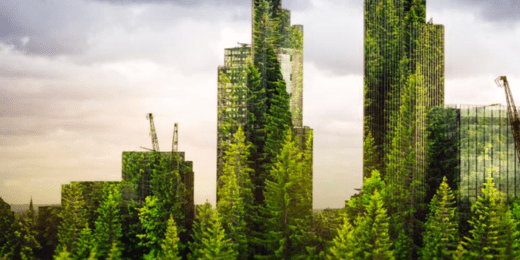Redefining the Built Environment: The Transition to Intelligent Structures

In today's rapidly evolving landscape, where advancements in technology are reshaping industries across the board, the built environment stands at the forefront of transformation. The integration of cutting-edge innovations, especially within the realm of proptech, has revolutionized how we design, construct, and manage properties. This convergence of technology and the built environment has ushered in a new era of efficiency, sustainability, and interconnectedness, redefining the way we interact with the our homes, offices, and other buildings.
Smart buildings are defined as structures equipped with technology that enables them to monitor and control various systems, such as lighting, heating, air conditioning, and security. However, todays buildings further this concept to the next level by incorporating artificial intelligence (AI) and machine learning (ML) algorithms to enable automated decision-making based on real-time data from the building itself.
Smart buildings, which had their start in the ‘80s, were about the technology and semi-automation of processes in a building. This made buildings more advanced, more comfortable, and more efficient. But for the most part, it didn’t go beyond that. The building generated a lot of data, but not much was done with it.
Today’s buildings leverage this data to act as agile, connected, and intelligent systems. Moreover, the integration of AI and ML algorithms enables automated decision-making based on this data. This not only enables seamless integration but also allows for scalability across the entire operation.
Innovations Transforming the Built Environment
To optimize the different part sof the built environment, sensors continuously monitor various conditions within the building. This data is then gathered on a remotely accessible dashboard, where operators can review, understand, and take action based on the data, or have the system make automated decisions. These intelligent buildings excel in safety and wellbeing by monitoring and measuring factors such as indoor air quality, temperature, equipment maintenance, lighting, occupancy, and more to generate and understand a wealth of data and take corresponding actions.
One critical area that has gained attention recently is optimizing air conditioning and heating systems in buildings or commercial AC. Smart AC controllers and smart thermostats can help building managers reduce energy consumption by optimizing the operation of these systems based on real-time data. They can also communicate with other systems in the building to make data-driven decisions about how and when to turn on and off individual units or to take other actions. As cooling and heating operations account for a significant portion of a building's energy use, automation can help optimize the indoor environment while allowing for cost savings.
For instance, if a connected system detects an unoccupied room, the smart AC controller can reduce or turn off the AC in that room to save energy. Moreover, some smart AC controllers like the Sensibo Air, can learn the occupants’ behavior and dynamically adjust the temperature accordingly, based on real-time data. And todays tech-driven buildings can range from having hundreds to tens of thousands of data points that they are measruing. This leaves less decisions in the hands of humans, who are slower to react and may let personal preference get involved, and rely on a fully automated system if desired.
Another area where interest has grown for smart buildings is indoor air quality. Over the years, especially since the pandemic, people have been more wary of the air they breathe. This has been seen in the rapid growth of the air quality monitoring market in recent years and the rise in legislation aimed at air quality monitoring in public places.
Smart air quality monitoring is more advanced then ever before with sensors that can detect dozens, if not hundreds, of airborne pollutants to alert occupants of a harmful environment.
Conclusion
Ultimately, harnessing data intelligently enables these smarter buildings to function with enhanced efficiency, creating safer and healthier environments for occupants and optimizing overall performance to achieve people-centric outcomes. By employing Sensibo, building managers can truly take charge of their indoor climate environment, minimizing energy waste, reducing electricity bills, and ensuring the satisfaction and well-being of occupants.










































